Volkswagen takes the fight to Tesla with its best EV yet
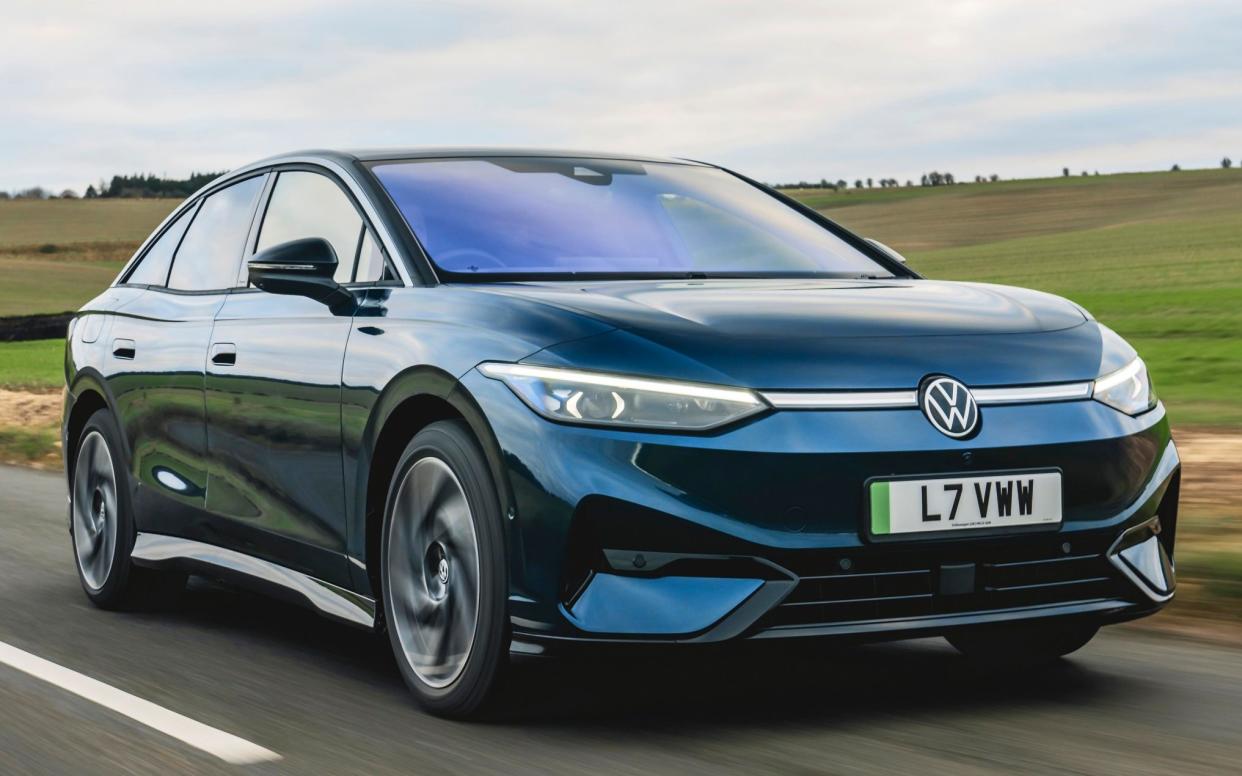
The ID.7 might take some getting used to – and not just its looks. That’s because the ID.7 is the next big thing for Volkswagen. It is to the familiar Passat family saloon as the ID.3 is to the Golf – if not a direct replacement, then an electric successor, which will sit at the top of Volkswagen’s EV range.
The smaller ID.3 battery-powered hatchback has always been marred by one big problem: its glitchy, poorly executed touchscreen. With the ID.7, Volkswagen claims to have cured most of the ills that afflicted said system.
It will need to be right, because this is the first time Volkswagen has launched directly against a certain American manufacturer that has made the electric car market its own.
Previously, Volkswagen’s EVs played in smaller size classes to Tesla’s; the ID.7, however, goes directly up against the Model 3. How does it compare?
Pros
Impressively roomy
Massive range
Comfortable and quiet
Cons
Still some usability niggles
Not as quick as a Tesla Model 3
Odd looks
Looks aren’t everything
Behind the slightly awkward lines, the ID.7 is quite a lot of car for the money. It’s vast – 4.9 metres (16ft) long, to be precise, which means it’s similar in size to the old Volkswagen Phaeton limousine rather than the Passat family car.
Indeed, while the ID.7 is positioned as a Model 3 rival, it feels much closer in stature and spirit to the larger Tesla Model S; not only is it roughly the same size, but it features a huge hatchback boot opening, in contrast with the Model 3’s saloon tail. Given it costs barely any more than the Model 3, you might even call it good value.
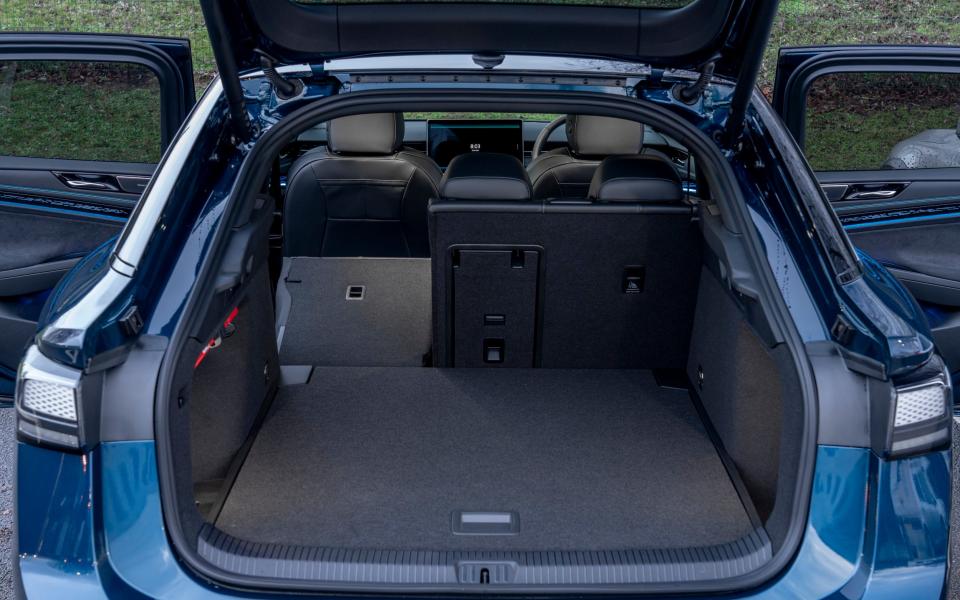
That extra length translates to more room inside, too; in fact, the ID.7’s back seats feel palatial. There’s plenty of room for four big, tall adults to travel in comfort – and with small kids installed in child seats, the backs of the front seats are so far away as to be unkickable.
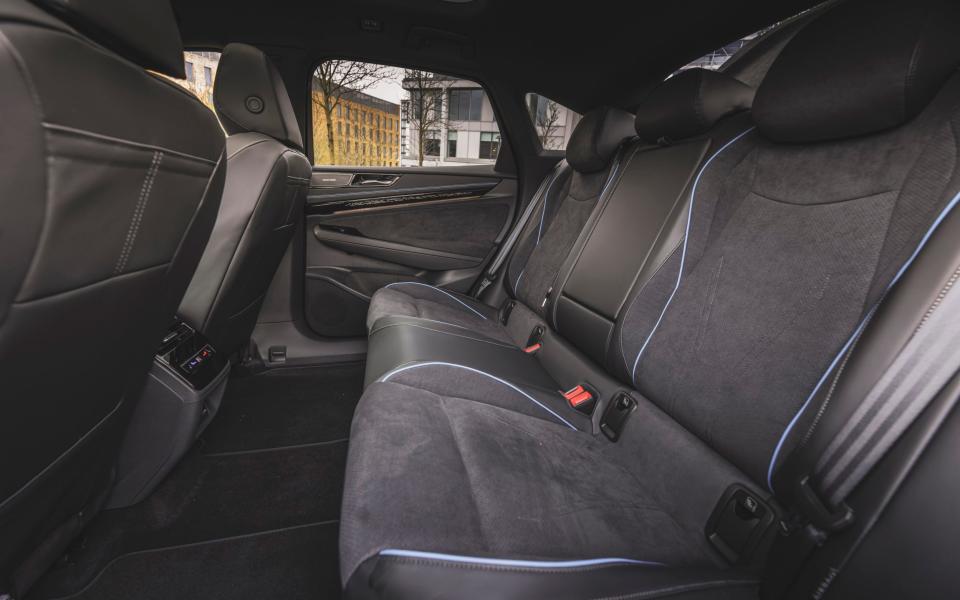
What about in the front, though? For it’s here that you’ll find the vast touchscreen – now 15 inches in size and loaded with Volkswagen’s latest software.
There are still some weird usability decisions here; indeed, Volkswagen’s dogmatism about moving physical buttons into touchscreen functions has not abated.
For example, you know those knobs you usually find on face-level air vents to adjust the direction of their airflow? There are none here. Instead, you can only adjust the vents from the climate control menu, where you drag on-screen blobs to show where you want the vents to point.
These are not only fiddly to use on the move, but they’re disabled when you leave the climate control in auto mode. So where in most cars you can leave the climate control to regulate the temperature as it sees fit, but move the vents physically if you don’t want the air blowing in your face, that’s not an option in the ID.7.
Simple minds
I don’t know about you, but I’ve never heard someone adjust an air vent and remark that it was too arduous a chore to do it manually, nor that they wished they could do it through the touchscreen instead. It was not broken, yet Volkswagen has deigned to fix it, for reasons that are hard to fathom
For all that, the ID.7’s new touchscreen system is more generally a wholesale improvement on the poor user experience that came before. It’s more navigable, more responsive and infinitely customisable, so you can create a home screen of your choice with the shortcuts you want, allowing you to spend less time faffing around in the menus trying to find a particular function.
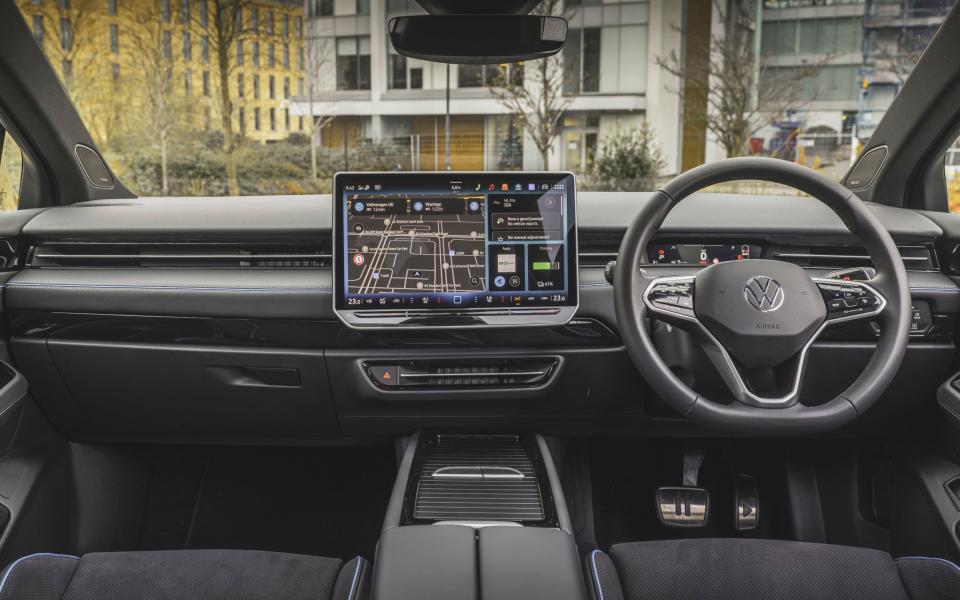
Oh, and the touch-sensitive sliders used to adjust the volume and climate controls off-screen are now illuminated – as they should have been from the start. Volkswagen has also taken a leaf out of Skoda’s book and added a proper always-on climate control bar along the lower edge of the screen, with most of the climate control functions available to press without having to fumble your way out of the menu you were using.
Volkswagen is also keen to point out that it’s incorporating artificial intelligence into the car’s voice recognition system, cutely named Ida, though this will come later in the year and be retrofitted to existing ID.7s via an over-the-air update.
The idea is that you bypass the touchscreen altogether by asking your car to make it warmer or cooler, turn things on or off, take you to your destination, open the blind to the (optional) panoramic glass roof, and so on.
This is great in theory. In practice, however, the voice recognition system itself is far too sensitive. You’re supposed to activate it by saying “Hey Ida”, but it seems to hear this in whatever you might be saying to your passenger all too regularly, so that it frequently jumps into your conversation with an “I didn’t understand that”.
On one mildly entertaining occasion during my drive, it activated itself and simply displayed the word “Dover” on the screen for about a minute. Nope, us neither.
Quality control
The quality of the ID.7’s interior feels right, though. All the bits you touch with any regularity are trimmed in dense, soft-touch plastics or a squishy material that does a good impression of leather, while the doors feel so heavy and solid they might as well be fashioned from ingots.
You can select from 30 colours of ambient lighting and every version gets a crystal-clear head-up display – which, by the way, is supposed to be the main source of vehicle information; the small, slit-like instrument binnacle below is intended to serve only as a back-up. Happily, this bit of the ID.7 works well.
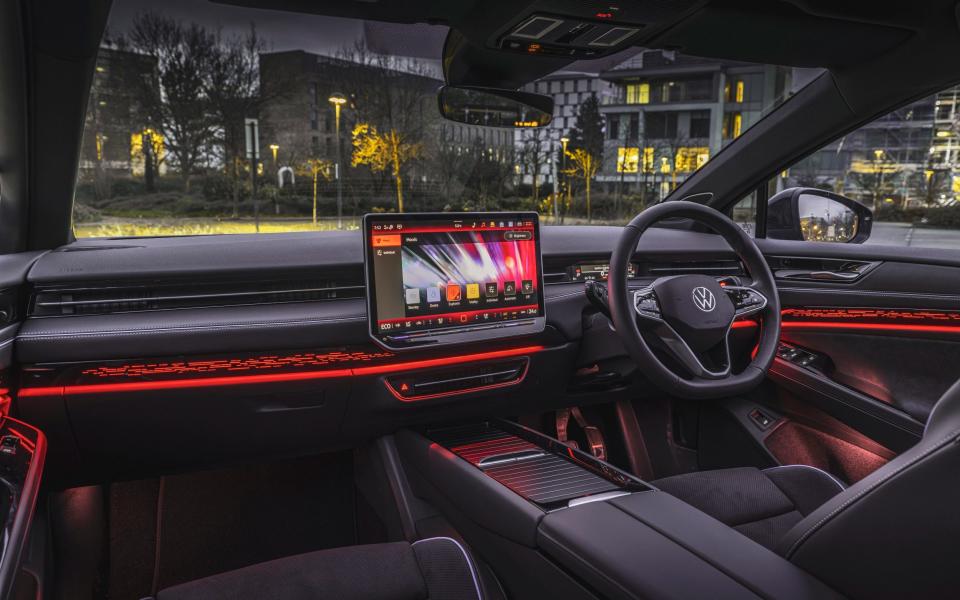
The ID.7 sits on the same platform as the other ID models, and therefore gets the same 77kWh (usable) battery as the ID.Buzz.
Its odd profile, however, may be for a reason; with a drag coefficient of 0.23, the ID.7 is a slippery customer. As a result, it can travel a whopping 383 miles according to the official figures, which should equate to a genuine 300-mile real-world range. It’ll also achieve 4.7 miles per kilowatt hour (mpkWh), which is an impressive figure for such a large, heavy car.
That figure does depend somewhat on the weather, however, particularly as the ID.7 doesn’t have a heat-pump as standard – a stingy choice given many much cheaper EVs do. You’ll have to pay £1,050 for the privilege, and you probably should, given the ID.7’s range will likely fall off a cliff in freezing conditions without it.
On the plus side, the ID.7 charges at a maximum of 175kW and an average of 120kW, which means it can top up from 10 to 80 per cent in about 28 minutes – not bad given you’ll add around 220 miles to its range in that time. A Model 3 will charge marginally more quickly, but not by much.
Comfort class
There is a big difference between the two cars on the road, however. The Model 3 feels as if it’s been set up to appeal to drivers of the sports saloons it’s targeting – all taut suspension and crisp steering.
By contrast, the ID.7 feels as though comfort is its priority. The suspension is more loping, the ride more controlled, the pedal responses less spiky.
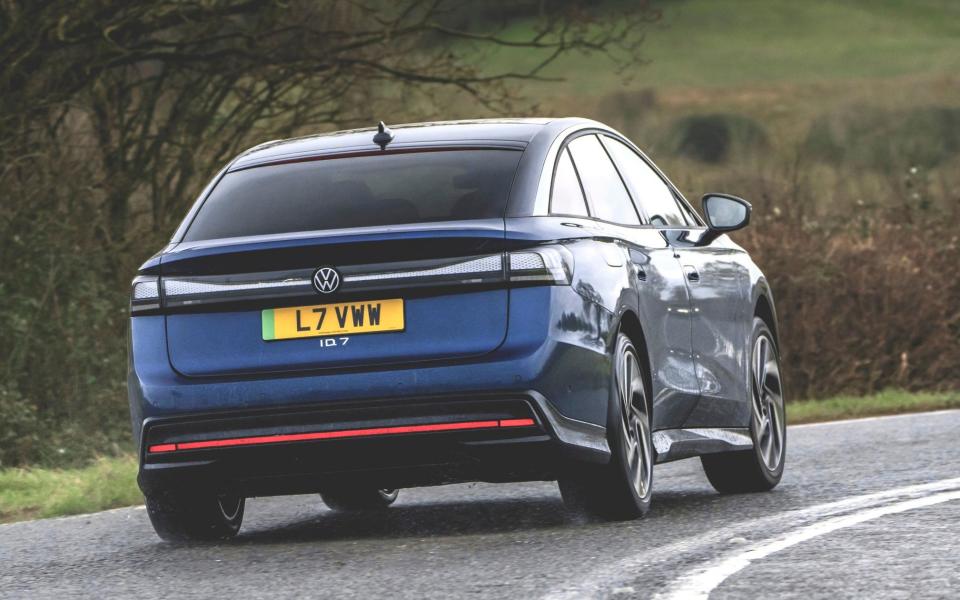
True, there’s still a bit of rattle and hum from the standard 20-inch wheels – one has to wonder whether this wouldn’t be an even smoother experience with 19-inch rims and deeper-sidewalled tyres. But on the whole, the ID.7 is a relaxing drive on the open road.
You can specify adaptive suspension as part of an expensive pack if you want; I wouldn’t bother. Set to Comfort mode, it helps iron out those ripples over nigglier ruts that you notice in the standard car, but it also introduces a floating quality off the tops of larger undulations that can make you feel slightly queasy.
As you might expect with its weight (a not-inconsiderable 2.1 tons unladen) and this easy-going nature in mind, the ID.7 isn’t particularly sporty to drive, but it does turn in neatly, with plenty of grip and crisp responses from the steering. So while it probably won’t make you grin, neither will it get you into trouble.
The Telegraph verdict
Sorry to sound like a stuck record, but this does feel like something of the same old story: a fundamentally good Volkswagen electric car that’s spoilt somewhat by silly usability decisions.
Having said that, those usability issues are less egregious here, amounting to nagging annoyances rather than deal-breakers. And in the context of the rest of the car, which is huge, roomy, comfortable, quiet, solidly built, long of range and quick to charge, they can be forgiven, if not entirely forgotten.
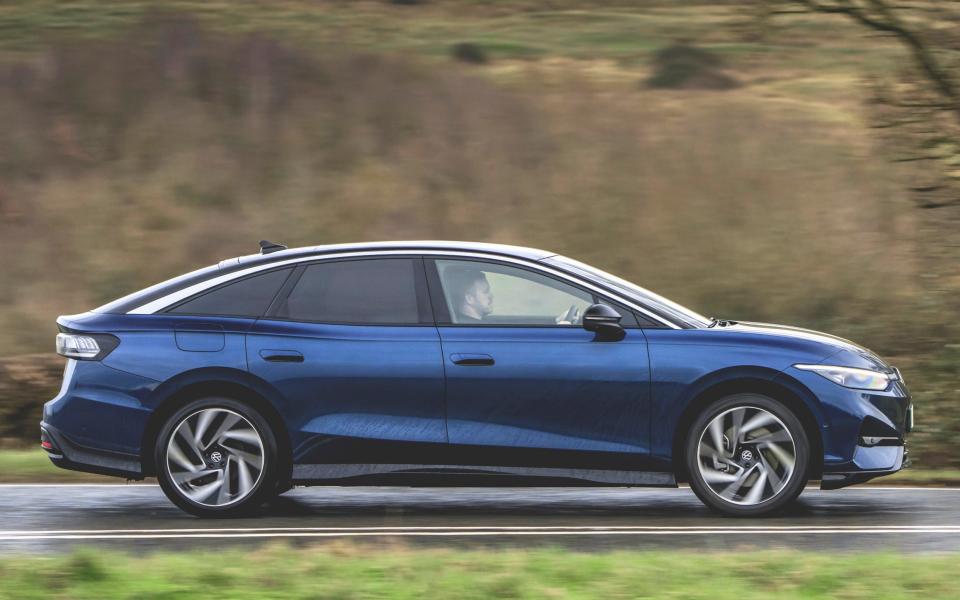
The ID.7 won’t win any beauty contests, but then it’s not as though its rivals are particularly comely either. And when you work out what this car can offer over and above them for barely any more money, its looks matter much less.
This, then, feels like a return to form for Volkswagen or, if not, then something close to it. It’s the best electric car yet to come out of Wolfsburg.
The facts
On test: Volkswagen ID.7 Pro Match
Body style: Five-door hatchback
On sale: Now
How much? £51,550 on the road (range from £51,550)
How fast? 112mph, 0-62mph in 6.5sec
How economical? 4.7mpkWh (WLTP Combined)
Electric powertrain: AC permanent magnet synchronous motor with 77kWh (usable) battery, 175kW on-board charger, Type 2/CCS charging socket
Electric range: 383 miles
Maximum power/torque: 286bhp/402lb ft
CO2 emissions: 0g/km (tailpipe), 19g/km (well-to-wheel)
VED: £0
Warranty: 3 years / 60,000 miles (unlimited mileage in first two years)
Spare wheel as standard: No (not available)
The rivals
Tesla Model 3 Long Range
346bhp, 390 miles, £49,990 on the road
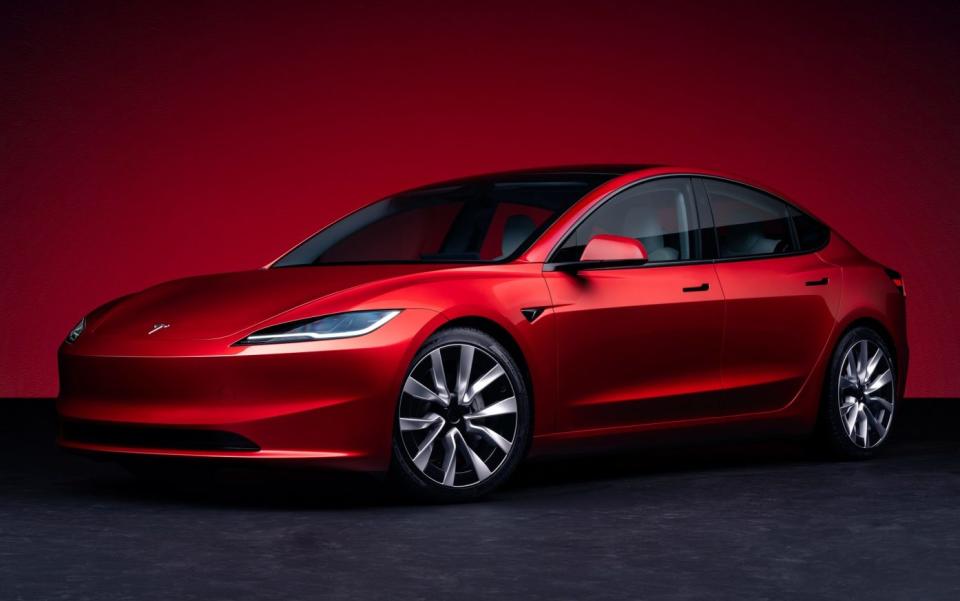
Undoubtedly the ID.7’s big rival, but this isn’t as roomy, nor offers such a practical tail end. Yet there are good reasons why this car has been so successful – you get an awful lot more grunt for your cash, for one thing. And for another, the ease of use of Tesla’s supercharging network, which makes driving an EV feel as though we had always expected it should.
BMW i4 eDrive35 Sport
286bhp, 299 miles, £50,755 on the road
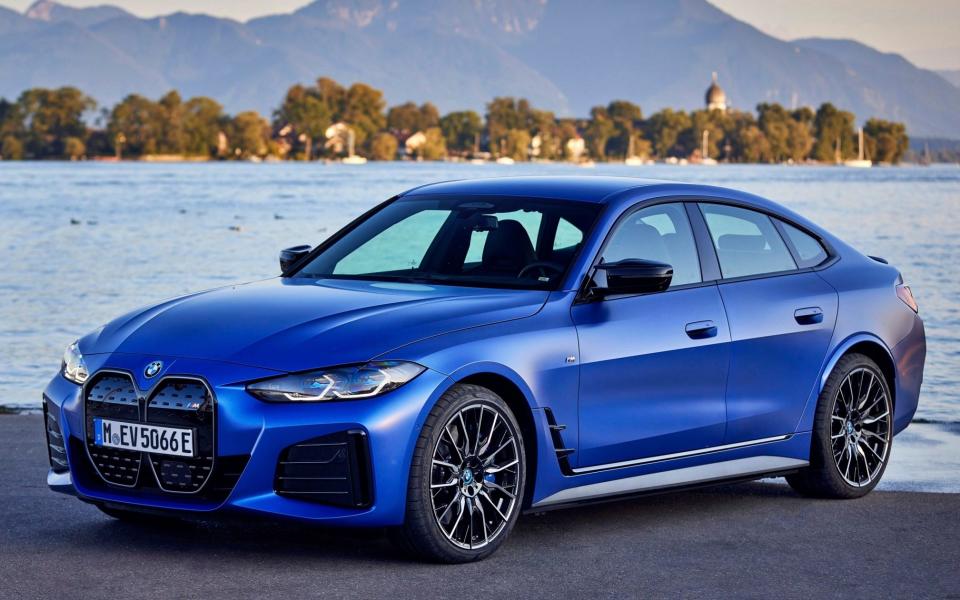
As you might expect, BMW’s contender is the driver’s choice, with sharp handling and quick responses. It is a lot of money for what it is, though, especially when you consider the ID.7 will go 60-70 miles further in the real world for less than a grand more. And while the i4 has a hatchback, the ID.7’s boot is much larger – and its rear seats more commodious.
Hyundai Ioniq 6 RWD Ultimate Long Range
223bhp, 338 miles, £50,540 on the road
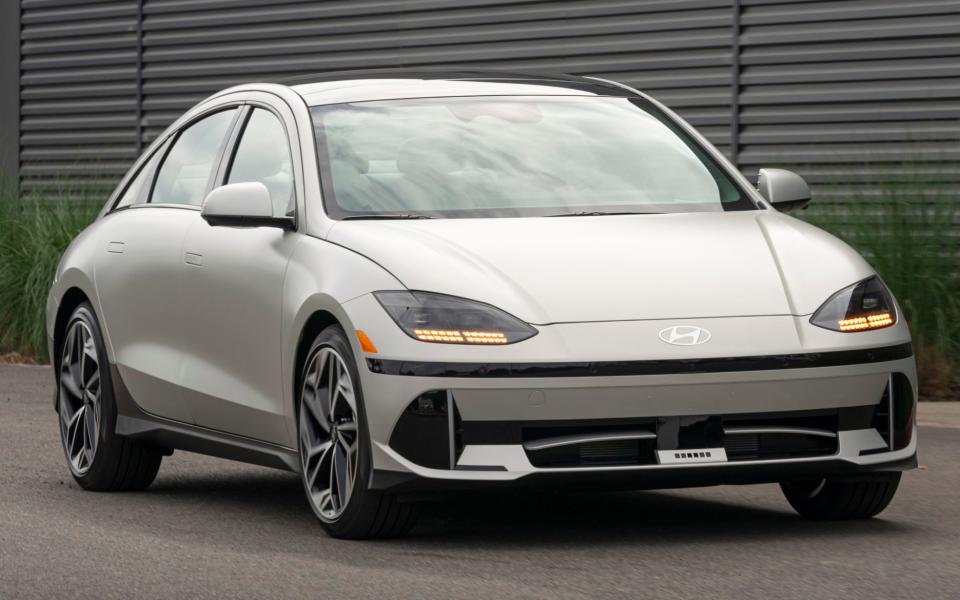
At this price and in this company, the Ioniq 6 starts to feel a little outgunned, with neither the range nor the power to match. It’s also tighter in the back seats, while its saloon tail isn’t as practical. For all that, though, this is still a lovely car to drive, with a sense of occasion from its concept car styling that few can match. And, of course, it has the longest warranty here.

